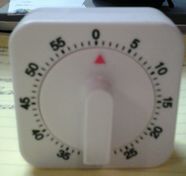|
I ghostwrote an article a while back.
It was an edu-marketing piece for swine veterinarians and producers. Luckily, my pre-writing preparation included an interview with a veterinarian, an expert who knew his stuff. I peppered him with questions, and he generously responded with clear, detailed answers. And as we talked, it slowly dawned on me that I was uncovering a content goldmine. (Amassing excellent content isn’t the only benefit of interviewing; read more about that here.) Later, as I read through the transcription of the interview, I thought, “Wow, this is solid, in-depth stuff.” But even with all that superb information, I knew I still had to weed. Weeding, as I like to call it, is a part of writing that often gets overlooked but is oh so crucial to creating a polished, coherent product. Weeding involves sifting and combing through research, notes, transcriptions, etc., and culling the essential points. For thorough weeding, the writer first has to step back and say, “Ok, the purpose of this article is (fill in the blank), and the audience it’s speaking to is (fill in the blank), and I’m limited to (blank) amount of words.” I might even type this statement at the top of my draft, so it’s always in view. Knowing what you need to convey crystallizes the valuable, pertinent details of your accumulated research data. And weeding is separate from outlining. Outlining is your roadmap; it guides you from start to finish on your writing journey. Any gardener knows that weeding is a tedious chore but well worth it because it beautifies a garden. Beautiful content probably isn’t your goal, but valuable content? Absolutely. So next time, remember to weed before you write. Don’t like to get your hands dirty? I don’t mind! Get in touch with me here. If you’ve ever hired someone to write a case study, white paper, or special report (or even written one yourself), you know that research is significant to the process. And I think it’s fair to say that for most of us, research begins with Google. Online research is the gold standard today and yields valuable results for sure. But I’ve found that interviewing a subject matter expert (SME) never lets me down when I’m in the hunt for premium content. Facts and details garnered from conversations with an expert can uncover some sparkling gems of information. But that’s not the only reason why I suggest interviewing as an alternative to Google. Here are some more that make it worthwhile. ~ Reduces research time. Scouring the web for articles that may or may not provide useful information can eat up a good chunk of time. Sometimes it feels like you’re circling your topic, slowly closing in on it with narrower search queries until finally, you hit some results that fit. This hit-or-miss searching is a time-waster. When you interview, by preparing questions in advance, you can approach the topic head-on and collect up-to-date, specific industry information from an expert. I can generally accomplish this in about 30 minutes to an hour. ~ Information gaps are quicker to fill in when you interview a subject matter expert. With online research, the information that’s returned sometimes isn’t quite right. The focus might be too narrow or addresses only one part of your topic. So you keep searching for the additional pieces. And when you find them, there’s the chance that the information is out of date, incomplete, or too general. Or, maybe you have a good grasp of the topic you’re writing about but want to dig deeper. Input from an expert source could help you flesh out some juicy details. ~ Some of the best content lives in another person’s head. Because your expert is sharing her unique perspective and experience, insightful and profound details often bubble up to the surface during the interview. Your back-and-forth discussion can go down paths that you might not have considered and lead to quality material. Such tasty morsels can offer a writer more clarity, and clear writing is a goal of any edu-marketing piece Research doesn’t have to begin and end with Google. Why not give interviewing a try? I think the stellar results you can achieve will surprise you.
I’m going a little off topic from catalog copywriting with this post, but it’s a relevant one nonetheless. Do you ever waste time? You know, procrastinate? At work, at home, wherever. Bit of a rhetorical question… But seriously, time-wasting and procrastination, when you think about it, must eat up thousands of valuable hours of useful productivity. After a quick Google search, I learned that we waste approximately 122 minutes of a work day procrastinating. (Where do those two hours go?) When I worked in the corporate world, I experienced the various and sundry ways that one could wile away the hours, even before the onslaught of the internet and social media. And when I left to become a freelance copywriter, I envisioned busy days where tasks and projects were knocked off my to do list with assembly line-like efficiency. Little did I know. Mr. Procrastinate lurks everywhere, and you can’t escape him. His persistence is second to none and his desire will not be denied! I fight with him every day. Arriving at my desk with the best of intentions, only to fall victim to him sooner rather than later. But I’ve recently discovered a simple method that, for me, has actually helped. And I rely on a humble device that requires no charging, no electricity, no batteries. Yup, that little bugger has pushed my productivity level through the roof! And with the help of my little kitchen timer, I’ve begun following a procrastination-reducing procedure described in a book by Ryan Munsey. The way it works is this: Set your timer for 25 minutes and start working. When the 25 minutes is up, and the alarm goes off, stop working. Then, set the timer again for 5 minutes and take a break from whatever you were working on. (Oops, have to stop writing – the timer went off! Be back in five…) Ideally, you should physically remove yourself from your desk, your computer, your cell phone, etc. Get up and walk around or do some stretching – I just washed the dishes that were in the kitchen sink! When the 5 minutes is up, go back to your desk, re-set the timer for 25 minutes, and get back to work. Do four sets of 25 minutes working/5-minute break, and then take a 30-minute break. After the 30-minute break, repeat the four sets again.
Pretty simple, right? I’ve found walking away from the desk to be tough, that it makes me anxious (but in a good way), to get back to work. I mean, I actually look forward to getting back at it. And the ticking of the timer keeps my motivation up. I know, some people may find it irritating, but it doesn’t bother me. It’s my gentle, little reminder that I have another mini-deadline approaching shortly. So, if Mr. Procrastinate has you by the scruff of the neck, why not give this easy-to-follow method a try? And be sure to let me know how it works for you… |
AuthorSuzanne Quigley - Copywriter Archives
December 2023
Categories
All
|


